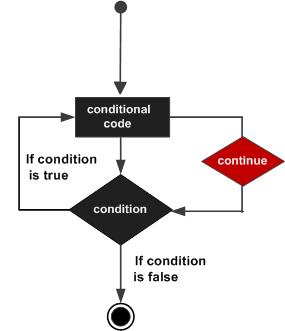利用python实现汉字转拼音的2种方法
前言
在浏览博客时,偶然看到了用python将汉字转为拼音的第三方包,但是在实现的过程中发现一些参数已经更新,现在将两种方法记录一下。
xpinyin
在一些博客中看到,如果要转化成带音节的拼音,需要传递参数,‘show_tone_marks=True',但我在实际使用时发现,已经没有这个参数了,变成了tone_marks,其它的参数和使用方法,一看就明白了,写的很清楚。
看下源码:
class Pinyin(object): """translate chinese hanzi to pinyin by python, inspired by flyerhzm's `chinese\_pinyin`_ gem usage ----- :: >>> from xpinyin import Pinyin >>> p = Pinyin() >>> # default splitter is `-` >>> p.get_pinyin(u"上海") 'shang-hai' >>> # show tone marks >>> p.get_pinyin(u"上海", tone_marks='marks') 'shàng-hǎi' >>> p.get_pinyin(u"上海", tone_marks='numbers') >>> 'shang4-hai3' >>> # remove splitter >>> p.get_pinyin(u"上海", '') 'shanghai' >>> # set splitter as whitespace >>> p.get_pinyin(u"上海", ' ') 'shang hai' >>> p.get_initial(u"上") 'S' >>> p.get_initials(u"上海") 'S-H' >>> p.get_initials(u"上海", u'') 'SH' >>> p.get_initials(u"上海", u' ') 'S H' 请输入utf8编码汉字 .. _chinese\_pinyin: https://github.com/flyerhzm/chinese_pinyin """
安装:pip install xpinyin
代码:
from xpinyin import Pinyin # 实例拼音转换对象 p = Pinyin() # 进行拼音转换 ret = p.get_pinyin(u"汉语拼音转换", tone_marks='marks') ret1 = p.get_pinyin(u"汉语拼音转换", tone_marks='numbers') print(ret+'\n'+ret1) # 得到转化后的结果 # hàn-yǔ-pīn-yīn-zhuǎn-huàn # han4-yu3-pin1-yin1-zhuan3-huan4
pypinyin
与xpinyin相比,pypinyin更强大。
安装:pip install pypinyin
使用:
import pypinyin
# 不带声调的(style=pypinyin.NORMAL)
def pinyin(word):
s = ''
for i in pypinyin.pinyin(word, style=pypinyin.NORMAL):
s += ''.join(i)
return s
# 带声调的(默认)
def yinjie(word):
s = ''
# heteronym=True开启多音字
for i in pypinyin.pinyin(word, heteronym=True):
s = s + ''.join(i) + " "
return s
if __name__ == "__main__":
print(pinyin("忠厚传家久"))
print(yinjie("诗书继世长"))
源码:
#!/usr/bin/env python
# -*- coding: utf-8 -*-
from __future__ import unicode_literals
from copy import deepcopy
from itertools import chain
from pypinyin.compat import text_type, callable_check
from pypinyin.constants import (
PHRASES_DICT, PINYIN_DICT,
RE_HANS, Style
)
from pypinyin.contrib import mmseg
from pypinyin.utils import simple_seg, _replace_tone2_style_dict_to_default
from pypinyin.style import auto_discover, convert as convert_style
auto_discover()
def seg(hans):
hans = simple_seg(hans)
ret = []
for x in hans:
if not RE_HANS.match(x): # 没有拼音的字符,不再参与二次分词
ret.append(x)
elif PHRASES_DICT:
ret.extend(list(mmseg.seg.cut(x)))
else: # 禁用了词语库,不分词
ret.append(x)
return ret
def load_single_dict(pinyin_dict, style='default'):
"""载入用户自定义的单字拼音库
:param pinyin_dict: 单字拼音库。比如: ``{0x963F: u"ā,ē"}``
:param style: pinyin_dict 参数值的拼音库风格. 支持 'default', 'tone2'
:type pinyin_dict: dict
"""
if style == 'tone2':
for k, v in pinyin_dict.items():
v = _replace_tone2_style_dict_to_default(v)
PINYIN_DICT[k] = v
else:
PINYIN_DICT.update(pinyin_dict)
mmseg.retrain(mmseg.seg)
def load_phrases_dict(phrases_dict, style='default'):
"""载入用户自定义的词语拼音库
:param phrases_dict: 词语拼音库。比如: ``{u"阿爸": [[u"ā"], [u"bà"]]}``
:param style: phrases_dict 参数值的拼音库风格. 支持 'default', 'tone2'
:type phrases_dict: dict
"""
if style == 'tone2':
for k, value in phrases_dict.items():
v = [
list(map(_replace_tone2_style_dict_to_default, pys))
for pys in value
]
PHRASES_DICT[k] = v
else:
PHRASES_DICT.update(phrases_dict)
mmseg.retrain(mmseg.seg)
def to_fixed(pinyin, style, strict=True):
"""根据拼音风格格式化带声调的拼音.
:param pinyin: 单个拼音
:param style: 拼音风格
:param strict: 是否严格遵照《汉语拼音方案》来处理声母和韵母
:return: 根据拼音风格格式化后的拼音字符串
:rtype: unicode
"""
return convert_style(pinyin, style=style, strict=strict, default=pinyin)
def _handle_nopinyin_char(chars, errors='default'):
"""处理没有拼音的字符"""
if callable_check(errors):
return errors(chars)
if errors == 'default':
return chars
elif errors == 'ignore':
return None
elif errors == 'replace':
if len(chars) > 1:
return ''.join(text_type('%x' % ord(x)) for x in chars)
else:
return text_type('%x' % ord(chars))
def handle_nopinyin(chars, errors='default', heteronym=True):
py = _handle_nopinyin_char(chars, errors=errors)
if not py:
return []
if isinstance(py, list):
# 包含多音字信息
if isinstance(py[0], list):
if heteronym:
return py
# [[a, b], [c, d]]
# [[a], [c]]
return [[x[0]] for x in py]
return [[i] for i in py]
else:
return [[py]]
def single_pinyin(han, style, heteronym, errors='default', strict=True):
"""单字拼音转换.
:param han: 单个汉字
:param errors: 指定如何处理没有拼音的字符,详情请参考
:py:func:`~pypinyin.pinyin`
:param strict: 是否严格遵照《汉语拼音方案》来处理声母和韵母
:return: 返回拼音列表,多音字会有多个拼音项
:rtype: list
"""
num = ord(han)
# 处理没有拼音的字符
if num not in PINYIN_DICT:
return handle_nopinyin(han, errors=errors, heteronym=heteronym)
pys = PINYIN_DICT[num].split(',') # 字的拼音列表
if not heteronym:
return [[to_fixed(pys[0], style, strict=strict)]]
# 输出多音字的多个读音
# 临时存储已存在的拼音,避免多音字拼音转换为非音标风格出现重复。
# TODO: change to use set
# TODO: add test for cache
py_cached = {}
pinyins = []
for i in pys:
py = to_fixed(i, style, strict=strict)
if py in py_cached:
continue
py_cached[py] = py
pinyins.append(py)
return [pinyins]
def phrase_pinyin(phrase, style, heteronym, errors='default', strict=True):
"""词语拼音转换.
:param phrase: 词语
:param errors: 指定如何处理没有拼音的字符
:param strict: 是否严格遵照《汉语拼音方案》来处理声母和韵母
:return: 拼音列表
:rtype: list
"""
py = []
if phrase in PHRASES_DICT:
py = deepcopy(PHRASES_DICT[phrase])
for idx, item in enumerate(py):
py[idx] = [to_fixed(item[0], style=style, strict=strict)]
else:
for i in phrase:
single = single_pinyin(i, style=style, heteronym=heteronym,
errors=errors, strict=strict)
if single:
py.extend(single)
return py
def _pinyin(words, style, heteronym, errors, strict=True):
"""
:param words: 经过分词处理后的字符串,只包含中文字符或只包含非中文字符,
不存在混合的情况。
"""
pys = []
# 初步过滤没有拼音的字符
if RE_HANS.match(words):
pys = phrase_pinyin(words, style=style, heteronym=heteronym,
errors=errors, strict=strict)
return pys
py = handle_nopinyin(words, errors=errors, heteronym=heteronym)
if py:
pys.extend(py)
return pys
def pinyin(hans, style=Style.TONE, heteronym=False,
errors='default', strict=True):
"""将汉字转换为拼音.
:param hans: 汉字字符串( ``'你好吗'`` )或列表( ``['你好', '吗']`` ).
可以使用自己喜爱的分词模块对字符串进行分词处理,
只需将经过分词处理的字符串列表传进来就可以了。
:type hans: unicode 字符串或字符串列表
:param style: 指定拼音风格,默认是 :py:attr:`~pypinyin.Style.TONE` 风格。
更多拼音风格详见 :class:`~pypinyin.Style`
:param errors: 指定如何处理没有拼音的字符。详见 :ref:`handle_no_pinyin`
* ``'default'``: 保留原始字符
* ``'ignore'``: 忽略该字符
* ``'replace'``: 替换为去掉 ``\\u`` 的 unicode 编码字符串
(``'\\u90aa'`` => ``'90aa'``)
* callable 对象: 回调函数之类的可调用对象。
:param heteronym: 是否启用多音字
:param strict: 是否严格遵照《汉语拼音方案》来处理声母和韵母,详见 :ref:`strict`
:return: 拼音列表
:rtype: list
:raise AssertionError: 当传入的字符串不是 unicode 字符时会抛出这个异常
Usage::
>>> from pypinyin import pinyin, Style
>>> import pypinyin
>>> pinyin('中心')
[['zhōng'], ['xīn']]
>>> pinyin('中心', heteronym=True) # 启用多音字模式
[['zhōng', 'zhòng'], ['xīn']]
>>> pinyin('中心', style=Style.FIRST_LETTER) # 设置拼音风格
[['z'], ['x']]
>>> pinyin('中心', style=Style.TONE2)
[['zho1ng'], ['xi1n']]
>>> pinyin('中心', style=Style.CYRILLIC)
[['чжун1'], ['синь1']]
"""
# 对字符串进行分词处理
if isinstance(hans, text_type):
han_list = seg(hans)
else:
han_list = chain(*(seg(x) for x in hans))
pys = []
for words in han_list:
pys.extend(_pinyin(words, style, heteronym, errors, strict=strict))
return pys
def slug(hans, style=Style.NORMAL, heteronym=False, separator='-',
errors='default', strict=True):
"""生成 slug 字符串.
:param hans: 汉字
:type hans: unicode or list
:param style: 指定拼音风格,默认是 :py:attr:`~pypinyin.Style.NORMAL` 风格。
更多拼音风格详见 :class:`~pypinyin.Style`
:param heteronym: 是否启用多音字
:param separstor: 两个拼音间的分隔符/连接符
:param errors: 指定如何处理没有拼音的字符,详情请参考
:py:func:`~pypinyin.pinyin`
:param strict: 是否严格遵照《汉语拼音方案》来处理声母和韵母,详见 :ref:`strict`
:return: slug 字符串.
:raise AssertionError: 当传入的字符串不是 unicode 字符时会抛出这个异常
::
>>> import pypinyin
>>> from pypinyin import Style
>>> pypinyin.slug('中国人')
'zhong-guo-ren'
>>> pypinyin.slug('中国人', separator=' ')
'zhong guo ren'
>>> pypinyin.slug('中国人', style=Style.FIRST_LETTER)
'z-g-r'
>>> pypinyin.slug('中国人', style=Style.CYRILLIC)
'чжун1-го2-жэнь2'
"""
return separator.join(chain(*pinyin(hans, style=style, heteronym=heteronym,
errors=errors, strict=strict)
))
def lazy_pinyin(hans, style=Style.NORMAL, errors='default', strict=True):
"""不包含多音字的拼音列表.
与 :py:func:`~pypinyin.pinyin` 的区别是返回的拼音是个字符串,
并且每个字只包含一个读音.
:param hans: 汉字
:type hans: unicode or list
:param style: 指定拼音风格,默认是 :py:attr:`~pypinyin.Style.NORMAL` 风格。
更多拼音风格详见 :class:`~pypinyin.Style`。
:param errors: 指定如何处理没有拼音的字符,详情请参考
:py:func:`~pypinyin.pinyin`
:param strict: 是否严格遵照《汉语拼音方案》来处理声母和韵母,详见 :ref:`strict`
:return: 拼音列表(e.g. ``['zhong', 'guo', 'ren']``)
:rtype: list
:raise AssertionError: 当传入的字符串不是 unicode 字符时会抛出这个异常
Usage::
>>> from pypinyin import lazy_pinyin, Style
>>> import pypinyin
>>> lazy_pinyin('中心')
['zhong', 'xin']
>>> lazy_pinyin('中心', style=Style.TONE)
['zhōng', 'xīn']
>>> lazy_pinyin('中心', style=Style.FIRST_LETTER)
['z', 'x']
>>> lazy_pinyin('中心', style=Style.TONE2)
['zho1ng', 'xi1n']
>>> lazy_pinyin('中心', style=Style.CYRILLIC)
['чжун1', 'синь1']
"""
return list(chain(*pinyin(hans, style=style, heteronym=False,
errors=errors, strict=strict)))
总结
以上就是这篇文章的全部内容了,希望本文的内容对大家的学习或者工作具有一定的参考学习价值,谢谢大家对【听图阁-专注于Python设计】的支持。
